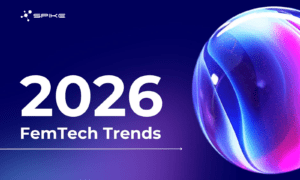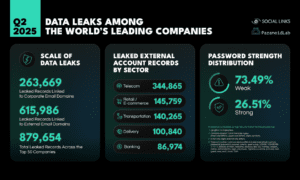The world around us is increasingly gamified. From loyalty programs in retail to interactive learning platforms in education, gamification is changing the way we interact with everyday tasks and experiences. But what exactly is gamification? In simple terms, gamification is the application of game-like elements, such as points, levels, rewards, and competitions, to non-gaming environments. Its primary goal is to enhance user engagement, improve motivation, and influence behavior. Whether it’s in education, marketing, employee training, or even personal health, gamification has become an influential tool for increasing participation and driving desired outcomes.
In recent years, this concept has become more than just a buzzword. According to CyberGhost (CG), the global gamification market has grown exponentially, estimated to reach $30.7 billion by 2025. This rapid expansion underscores its vast potential across industries. But as gamification continues to take over different sectors, questions arise about its effectiveness, the challenges it poses, and the potential dangers that come with its widespread adoption.
The Science Behind Gamification: Why It Works
Gamification taps into basic human psychology; specifically, our inherent desire for achievement, competition, and recognition. These are the same principles that make video games addictive. When designed well, gamified experiences stimulate the release of dopamine, a neurotransmitter linked to pleasure and reward. This can create a sense of satisfaction and accomplishment, driving users to continue engaging with the product or service.
Key Elements of Gamification:
1) Points and Rewards: A fundamental component, points reward users for completing tasks. These can be exchanged for prizes or simply serve as a marker of progress.
2) Badges and Achievements: Similar to merit badges, these recognize and celebrate specific accomplishments or milestones, fostering a sense of accomplishment.
3) Leaderboards: By ranking users against one another, leaderboards tap into the competitive nature of individuals, driving them to outperform others.
4) Levels and Progression: Users can ‘level up’ as they complete tasks or accumulate points, introducing a sense of progression and mastery.
5) Challenges and Quests: Adding timed or specific challenges engages users to complete tasks within a set period, adding excitement and urgency.
These game mechanics encourage users to invest more time and effort in an activity, and they can be applied across various industries. The workplace, education, health, and marketing sectors are already benefiting from these principles.
Impact of Gamification Across Sectors
1) Gamification in Education
In education, gamification has transformed traditional teaching methods by making learning more interactive and engaging. Educators use game-based tools and platforms to help students visualize progress, set goals, and develop problem-solving skills. Platforms like Kahoot! and Duolingo are prime examples of how gamification can make learning fun. Research indicates that students are more likely to retain information and perform better when educational content is gamified.
A study conducted by the University of Bristol found that students who engaged with gamified learning materials were 34% more likely to improve their scores than those who did not use these methods. This shows how gamification can turn mundane learning tasks into exciting, rewarding experiences.
2) Gamification in the Workplace
Corporations have also adopted gamification as a powerful tool for enhancing employee engagement, productivity, and training. Gamified training programs allow employees to track their learning, earn certifications, and receive recognition for their efforts. Companies like Salesforce and IBM use gamified elements in their training programs to boost knowledge retention and improve performance.
However, there’s more to workplace gamification than just learning. Employees are increasingly drawn to gamified performance metrics, where hitting certain goals or achieving certain levels can lead to rewards, from simple digital badges to significant bonuses. As a result, businesses report increased employee motivation, job satisfaction, and even company loyalty.
3) Gamification in Health and Fitness
The health and wellness industry has also been quick to embrace gamification. Fitness apps like Fitbit, Nike Run Club, and MyFitnessPal use game mechanics to encourage users to exercise regularly, eat healthier, and lead a more active lifestyle. For instance, users are awarded points for reaching fitness goals, which can be shared with friends or displayed on leaderboards. The competitive element of gamification pushes users to stay consistent, whether it’s walking 10,000 steps a day or sticking to a meal plan.
A study published in the Journal of Medical Internet Research found that gamified health apps improved user motivation and adherence to fitness goals by 48%. This suggests that the future of public health initiatives might involve more gamified systems to promote healthier behaviors on a wider scale.
The Challenges of Gamification: Potential Downsides
Despite its many advantages, gamification isn’t without its problems. When poorly implemented, it can backfire, leading to negative consequences such as stress, anxiety, or user burnout. One major challenge is maintaining user interest over time. Once the novelty of earning points or badges wears off, participants may disengage.
1) Diminishing Returns
Over time, rewards that were initially motivating may lose their value, leading to diminishing returns. Users may feel that they’ve achieved everything they can, and as a result, they stop participating. This is a common issue with apps or programs that don’t regularly update their gamified elements. To combat this, developers must continuously introduce new challenges, rewards, and levels to maintain user interest.
2) Overemphasis on Competition
While leaderboards can motivate some users, they can also discourage others who feel they can’t compete with top performers. Instead of driving engagement, leaderboards may alienate users who don’t see themselves as competitive, causing them to disengage entirely.
3) Data Privacy Concerns
As gamification platforms collect vast amounts of user data to track progress and personalize experiences, privacy concerns naturally arise. The data collected from users’ interactions with gamified systems could potentially be exploited or mishandled. Protecting personal data should be a top priority when implementing gamified systems, especially since many of these platforms require sensitive information to create customized experiences.
Additionally, there is a fine line between motivating users and manipulating their behavior. Critics argue that some gamified systems, particularly in marketing and social media, manipulate users into engaging more than they would naturally. This can lead to addictive behaviors, as users become overly dependent on the sense of reward or achievement that gamification provides.

Best Practices for Implementing Gamification
To avoid these pitfalls, businesses, educators, and developers must follow best practices when introducing gamification into their processes. Here are some key strategies:
1) Set Clear Objectives: Gamification should serve a specific purpose, whether it’s increasing productivity, improving learning outcomes, or encouraging healthier habits. Without clear objectives, it’s easy to fall into the trap of using game elements just for the sake of it, which may lead to disengagement.
2) Design for Diversity: Not everyone is motivated by competition or rewards. Some users may prefer collaborative challenges, while others are driven by personal growth. Gamified systems should cater to different types of users by offering various types of goals and rewards.
3) Regularly Update Content: To keep users engaged, it’s essential to regularly introduce new challenges, rewards, and progression paths. Stagnant content can quickly lead to disinterest, so updating gamified elements ensures that users remain motivated over the long term.
4) Prioritize User Privacy: As revealed by CyberGhost (CG), safeguarding user data is crucial. Developers must ensure that any data collected from gamified systems is securely stored and used ethically, with clear communication to users about how their data is being used.
The Future of Gamification
As technology continues to advance, so too will the ways in which gamification is applied. With the rise of artificial intelligence (AI) and virtual reality (VR), the future of gamification looks incredibly promising. AI could make gamified experiences even more personalized by analyzing user behavior and preferences to create tailored challenges and rewards. Meanwhile, VR could provide more immersive gamified experiences, particularly in education and training, allowing users to ‘step into’ the game environment.
Moreover, as society becomes more digital, gamification is likely to play a larger role in addressing social issues. From encouraging sustainable behaviors (such as recycling or reducing energy consumption) to promoting mental health, gamified solutions could help individuals adopt better habits on a large scale.
Conclusion
Gamification has come a long way from its early days as a niche marketing strategy. It has now infiltrated various sectors, revolutionizing the way people learn, work, and engage with their health. When applied effectively, gamification has the power to drive engagement, improve performance, and make everyday tasks more enjoyable. However, to maximize its potential, organizations must be mindful of the challenges it poses, such as user burnout, competition fatigue, and data privacy concerns. This Topic underscores the importance of designing gamified systems that are both engaging and ethically responsible. As we move further into a digital age, gamification’s impact will only continue to grow, changing the way we interact with the world around us.



































